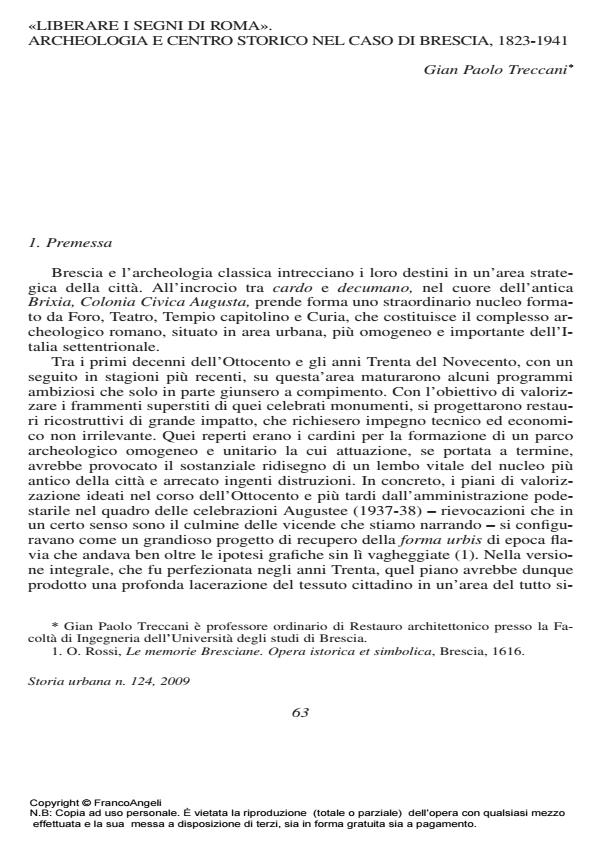"Liberare i segni di Roma". Archeologia e centro storico nel caso di Brescia, 1823-1941
Titolo Rivista STORIA URBANA
Autori/Curatori Gian Paolo Treccani
Anno di pubblicazione 2010 Fascicolo 2009/124
Lingua Italiano Numero pagine 29 P. 63-91 Dimensione file 6362 KB
DOI 10.3280/SU2009-124003
Il DOI è il codice a barre della proprietà intellettuale: per saperne di più
clicca qui
Qui sotto puoi vedere in anteprima la prima pagina di questo articolo.
Se questo articolo ti interessa, lo puoi acquistare (e scaricare in formato pdf) seguendo le facili indicazioni per acquistare il download credit. Acquista Download Credits per scaricare questo Articolo in formato PDF

FrancoAngeli è membro della Publishers International Linking Association, Inc (PILA)associazione indipendente e non profit per facilitare (attraverso i servizi tecnologici implementati da CrossRef.org) l’accesso degli studiosi ai contenuti digitali nelle pubblicazioni professionali e scientifiche
"Liberare i segni di Roma". Archaeology and historic centre, the example of Brescia (1823-1941) - Brescia, archaeological site, Augustus Bimillenary anniversary, restoration The author reconstructs the formation of the urban archaeological site of the city of Brescia (the most homogeneous and important in North of Italy) and tries to explain the reasons for the partial failure of that ambitious program.Since the early years of 19th century to the first half of 20th century, some ambitious programs were partially carried out in this area. Some reconstruction works were proposed - which required substantial economic and technical resources - with the purpose of enhancing the last fragments of those celebrated ancient buildings. The story starts in the early years of the nineteenth century with the excavations and the following partial reconstruction of the Tempio Capitolino, and ends in the 1950s with a town-planning scheme (1957) which, with regard to the historic city centre, inspired by the original proposal, developed between the two world wars (in particular, on the occasion of celebrations for the Augustus Bimillenary, 1936-37). It unveiled (not without some related demolition of several houses) an archeological area that was even larger than the universally condemned urban demolition of the Piazza Vittoria area, by Marcello Piacentini (1932).
Gian Paolo Treccani, "Liberare i segni di Roma". Archeologia e centro storico nel caso di Brescia, 1823-1941 in "STORIA URBANA " 124/2009, pp 63-91, DOI: 10.3280/SU2009-124003